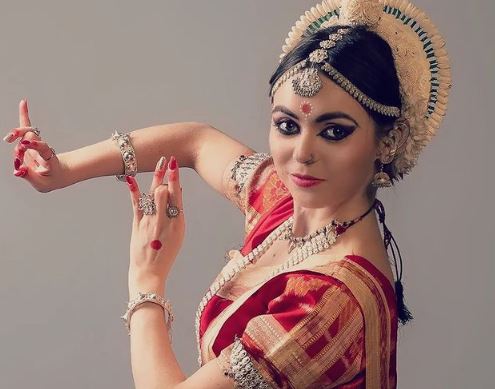New Delhi: Polish dancer Zofia Lichota took to the stage Saturday for her Odissi dance performance, “Mahabhutas: Between Air and Earth”, creating a synergy between the movements of the classical dance form and the two elements.
Organised by Utsav Educational and Cultural Society at India International Centre, the dance performance was a composition of five separate pieces, tied together with a single theme.
“This program is about these two elements which we are trying to connect with the classical Odissi dance repertoire, so in each item we are going to describe how we see different elements in these dances,” Lichota told PTI.
Starting with “Mangalacharan”, the 33-year-old dancer invoked Saraswati, the goddess of music, poetry, and dance: the artforms that surround everyone.
“We are just all using these beautiful artforms in our daily life. And this is very similar to the air because it just surrounds us and without air we cannot breathe. And I feel without art it would be very difficult to live also. So that’s how we are trying to connect this element with classical Odissi repertoire,” she said.
In the second piece, “Shankarbarnam Pallavi”, Lichota evoked the beauty of nature and the divine sculptures found in Odisha temples.
The dancer also performed “Lalit Lavang Lata” – an ashtapadi taken from the Geet Govind, and “Radharani”, a playful love story of Krishna and Radha.
The dance performance came to an end by paying homage to the eternal Shakti and her 16 forms, followed by ‘Moksha’, “depicting the freedom from the cycle of death and rebirth and emphasising the continuous interplay between air and earth throughout life”.
Lichota has been learning the Indian classical dance form under Odissi exponent Ranjana Gauhar for the last 11 years and sees herself “as the flag bearer of Odissi in Poland”.
Talking about her dance journey, she said coming to a culture entirely different from her own was difficult initially but the determination to learn Indian dance in India helped her overcome the obstacles.
“In the beginning it was very difficult because of the cultural differences, different languages, and many other things. Indian classical dance is very different from western dances because the positions are quite different. But I was very sure that I wanted to learn Indian dance in India so I was very determined to do this,” she said.
Lichota added that learning the dance under the ‘guru shishya parampara’ also instilled in her a strong connection with her guru.
“In Europe, we are mostly focussing on movements and technique, whereas in India, where you have this ‘guru shishya parampara’, it’s not only about the movements, it’s also about the connection with the guru to learn how to live and be a good human being, it’s not only about dance,” she said.
Lichota’s performance was also attended by Odissi exponents Sharon Lowen and Jyoti Shrivastava, Kathak doyens Shovana Narayan, Uma Dogra and Alaknanda Das, and Mohiniyattam veteran Bharati Shivaji.
PTI
